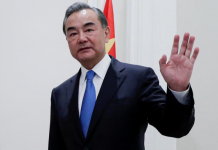Overleveraged, Rosneft’s Pain is Particularly Acute
The pain for Rosneft, the company which the Russian government hoped would gain the size necessary to compete on equal terms with Western oil majors, is particularly acute. As part of its effort to gain scale, the company in 2013 took on massive debt—$40 billion according to Reuters—to finance its acquisition of Russian competitor TNK-BP for $55 billion.
To help pay down debt, Rosneft, also in 2013, concluded an agreement with Chinese National Petroleum Corporation to supply 400 million metric tons of crude over twenty five years, under which Rosneft was entitled to receive prepayment equal to 30 percent of the contract’s value (Rosneft received RUB 1027 billion in 2015 Q3).
At the end of Q3, Rosneft’s net debt stood at $24 billion. Yet, Alexey Bulgakov, a fixed income analyst at Sberbank CIB estimates that Rosneft may already have accessed the maximum amount of cash it can under the deal, given the decline in price from ~$100-plus per barrel in 2013 to ~$30 per barrel now and the terms of the agreement. And, should crude prices remain at current levels, Rosneft likely cannot generate the cash to cover its investment, interest, and debt repayment obligations.
Russian government officials and energy producers argue that a depreciating Ruble has attenuated the impact of lower crude prices, since each US$ generates more Rubles, which is important given that the bulk of their expenses are in Rubles. This, however, isn’t the only impact of a weak Ruble. It can also cause inflation, and this has been the case in Russia. The following table, from Rosneft’s quarterly Management’s Discussion and Analysis reports, provides the Russian Central Bank data for cumulative inflation over 2015’s first three quarters:
![]()
For Rosneft, inflation has contributed to increased costs in all but one expense category compared to 2014’s corresponding quarter (percentage change in red font in column 2 in the table below) and, because revenues declined in 2015, increased the ratio of that cost to revenue compared to the corresponding 2014 period (last two columns).
These two effects caused operating income through Q3 2015 to fall to RUB 455 billion from RUB 539 billion in 2014 (and, of course, in US$ terms, the value of the operating income decreased even more, since the respective average exchange rates were RUB 59.28/US$ and RUB 35.59/US$ in 2015 and 2014). In addition, if not for the 41.3 percent decrease in export customs duty—RUB 520 billion in absolute terms—operating income would have been negative RUB 65 billion through 3Q 2015 (RUB 455 billion minus RUB 520 billion).

Reduced revenues and increased costs in 2015’s first three quarters also reduced the amount of cash Rosneft generated to cover investment, dividends, and net finance expense (which includes interest paid, interest received, and operations with derivative financial instruments). The following table shows that the cash remaining after Rosneft’s spending on net finance expense, investment, and dividends, after adding non-cash depreciation, depletion, and amortization expense back into operating income, declined significantly through three, six, and nine months of 2015 compared to 2014 in Ruble terms and, of course, even more in US$ terms given Ruble depreciation (RUB 59.28/US$ in 2015 versus RUB 35.59/US$ in 2014):

Given that average crude prices in Q4 2015 were substantially lower than in Q3 and that they likely will even lower in Q1 2016, Rosneft’s financial operating results should also deteriorate substantially in these quarters. The following table projects Rosneft’s revenues in Rubles in Q4 2015 and Q1 2016 using the Ruble’s Q4 average US$ exchange rate and a guesstimate of the Ruble’s Q1 US$ average exchange rate; an estimate of sales in volume terms, assuming output in 4Q 2015 continued to outpace 2014 levels by 2 percent and stayed constant in Q1 2016; and guesstimates of crude prices, taking into account Ural crude’s discount to Brent, Rosneft’s price competition in Europe with Saudi Arabia, and the impact on Rosneft prices in Europe and Asia from a prepayment agreement with Transneft that lowered its realized price per barrel (in Q1, Q2, and Q3, a reduction of RUB 200, RUB 40, and RUB 180 in Europe and RUB 170, RUB 350, and RUB 190 Rubles in Asia).





